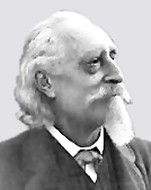|
绪论 - 什么是性行为? |
|
性及性行为的术语演变史
5:从“性爱”到“性关系”的转化 |
 |
|
保罗·曼特嘉扎
(1831-1910),意大利内科医师与人类学家,发表过一套著名的科学著作《性爱三部曲》:《性爱生理学》(1872)、《性爱卫生学》(1877)和《人类的性爱》(1885)。后一部著作的英译本用“性关系”替代了“性爱”一词。
Paolo Mantegazza
(1831-1910), an Italian physician and anthropologist, published a famous scientific "Trilogy of Love", i.e. the three volumes "Fisiologia dell' amore" (Physiology of Love, 1872), "Igiene dell' amore" (Hygiene of Love, 1877), and "Gli amori degli uomini" (The Loves of Mankind, 1885). The English translation of this latter book replaced the word “amori” (loves) with “sexual relations".
|
|
|
19世纪伊始,新名词“性(sexuality)”见诸科学研讨之中。这个词语仍就是指称作为男性或女性的特性。但是,在数十年里,它也就用于表示性的专门事务,而且最后它终于拥有含性能力或性知觉能力(the
capability of erotic feelings)的意思。现在,“性”这个词语远远超越了男性或女性的含义,它并不必定是指男女性交或生殖这一层含义。甚至对独自的手淫,人们现在也能够认识到是“性”行为了,也就是说它被看作某人的“性”表达。
我们可以提供一个这种概念上转变的典型例子,即那个时期的一本重要的意大利著作的英译本:《曼特嘉扎外国性习俗研究》(Mantegazza's
study
of
Foreign
Sexual
Customs,“Gli
amori
degli
uomini”)被译成英译本《人类的性关系》(The
Sexual
Relations
of
Mankind)。意大利语性爱(amori,即英语love)被“性关系(sexual
relation)”所替代,这一事实标志着现代的性研究超越了传统上对于这个课题的性研究。换一句话说,人们赞同废除古代的性爱艺术(ars
amatoria),而代之以新的表达术语,即性的科学(scientia
sexualis)。“性爱(love)”作为科学研究的一个课题而言,它神秘莫测、如此地琢磨不定、似乎也含混不清、充满着诗情画意,而且还带有感情色彩。此处出现的“性(sex)”这个词语,恰如其分,显得更加地专业化和中立化,更容易让人分辨,这种转变可以让人以更冷静和自控的方式对这个课题做出验证。“性爱(love)”本身偏于哲学化,而“性关系”却能够予以分类和量化。
|
|
|
|
|
曼特嘉扎的《人类的性关系》美国译本
American edition of Mantegazza's "Gli amori degli uomini".
|
|
|
参见彭晓辉译.性健康促进行动方案:区域磋商会议既要.-概念框架.吴敏伦审校.赫西菲尔德性学资料库:http://www.sexarchive.info/CH/PSHC/PSH-CH/02cf.html
(2008-12-21)
;另参见:彭晓辉.
对“Sex”和“Sexuality”的讨论及其定义的中文翻译.
见:阮芳赋总编.潘绥铭主编.
中国“性”研究的起点与使命.
台湾高雄:万有出版社,2005。 |
|
|
|
Introduction - What is sexual behavior? |
|
History of the Term 6 |
|
At the beginning of the 19th century the new noun "sexuality" appeared in the scientific discussion. Again, at first this word referred only to the quality of being male or female. Within a few decades, however, it was also used to denote a preoccupation with sexual matters, and finally it came to mean the possession of sexual powers or the capability of erotic feelings. “Sexuality” now meant more than maleness or femaleness, and it was not necessarily always related to male-female encounters or to reproduction. Even solitary masturbation could now be perceived as "sexual" behavior, i.e., as an expression of someone's "sexuality".
A good illustration of this conceptual shift is provided by the English translation of an important Italian book of that period:
Mantegazza’s study of foreign sexual customs (“Gli amori degli uomini”) was translated into English as “The Sexual Relations of Mankind”. The fact that “amori” (loves) was replaced by “sexual relations” marks the triumph of modern sex research over the traditional approaches to the subject. In other words, the ancient
ars amatoria (art of love) was cast aside in favor of a new
scientia sexualis (science of sex). "Love" mysterious and ever elusive, seemed too vague, poetic, and emotional a subject to be approached by science.
In its place now appeared "sex" a more technical and neutral, less confusing subject that could be examined in a more sober and controlled fashion.
"Love" had lent itself to philosophizing, "sexual relations" could be classified and counted.
|
|
|
|